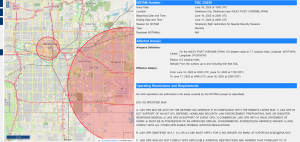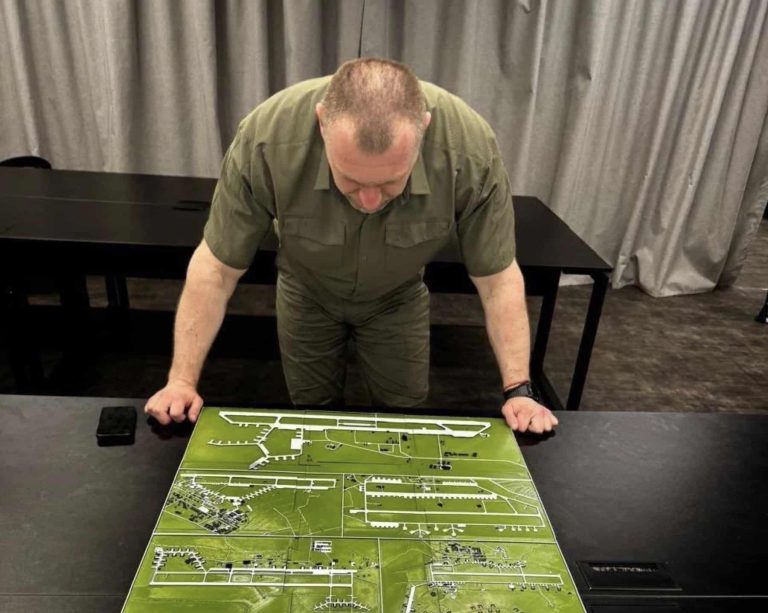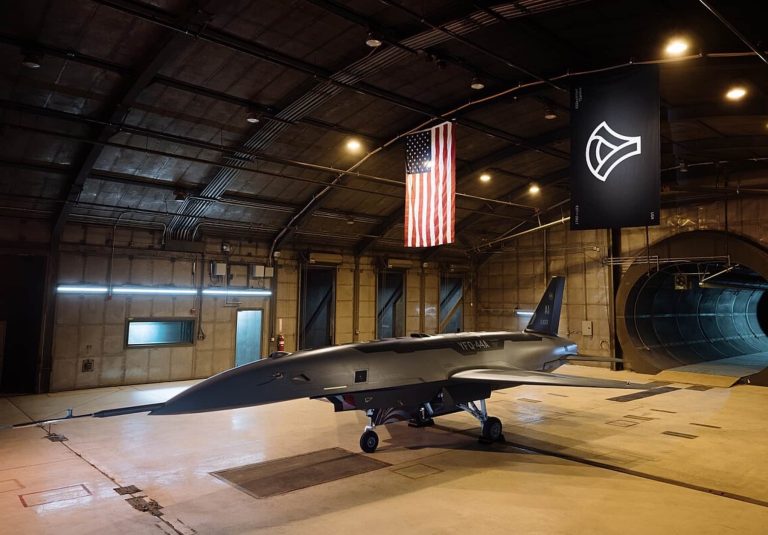What’s up, guys? Today, we’re checking out this monster right here. This is the 2Raw Helion, in collaboration with iFlight. This is a ready-to-fly 10-inch long-range FPV drone that you can bind to your remote and start flying long-range straight away. This is an extremely interesting piece of gear that I cannot wait to tell you more about. Let’s check it out.
Checking out the Helion 10″ FPV Drone
So, first things first, obviously, we need to talk about the size of the drone because it’s unlike any other drone that I’ve reviewed on this channel. It is a 10-inch drone, and that is not what really makes it interesting. The fact is that usually, if you want to fly long-range, the norm is to fly a 7-inch drone. However, they are not that efficient in the air, and they are also not that fast for a longer period of time. So, this is where bigger props come into play.
10-inch drones are much more efficient, much faster, and much more agile in the air when compared to a 7-inch drone. From my experience comparing the 7-inch drone to this drone is just another world, and there really isn’t a fair comparison between the two because this one is so much more different.
Now, why I say this one is more special is because, so far, at least from my memory, we haven’t seen a more well-known brand push these big drones to the mass public. This is the first one that I’m seeing that is kind of mass-produced and has the backing from iFlight. It’s been backed up from iFlight quite a lot because they are the ones manufacturing and transporting the drone, shipping it to the customers.

It is a collaboration project between 2Raw Aerial, who make a lot of big drones, and iFlight. So, this drone, the Helion 10, is their baby, if I can say that. It’s vastly developed by Ellis Van Jason, who, as you might know, is one of the pioneers of the FPV industry, one of the coolest FPV pilots around.
He has put a lot of effort into developing this drone and making it as efficient and as good as possible. So, this drone is kind of unique in my view because it’s not made by just one corporation. It’s made by a person with a lot of passion behind him and is also a collaboration with a big company to distribute it to the mass public.
The Helion 10, as you can see, is a huge, huge drone, and in this video, I’m going to focus on my experience of flying this drone in the past couple of weeks. Now, I didn’t plan to buy this drone. I bought this drone myself, but a friend of mine actually got one himself, and I was able to check it out, to fly it on a large open field, and I was able to see this drone in action before deciding if I want to have one of these or not.
I quickly got convinced and bought one myself as well. The amount of speed it can pick up, the amount of ground it can cover very efficiently, as well as the fact that it’s not that loud, makes it something that I really needed in my fleet because sometimes you really need to cover a large amount of ground very quickly and want to keep that speed.

You don’t want to, you know, with a regular 5-inch or a 7-inch drone, you’re kind of limited on how much you can push it before you actually have to slow down. Here you can keep a much higher average speed, and you can cruise with more than 100 km/h easily.
That’s mostly because of that battery, which we’re going to talk about in just a second. So, let me just remove that battery so I can show you everything about the drone. We have a very interesting design here, both on the front and on the back arms of the drone. We have these braces that are here to keep the drone more stable, to keep those vibrations away, and make it even more sturdy.
We have these braces here on the front, and we also have braces here on the back that are going to make this drone even more stable and smoother in the air.
We have these giant motors here that don’t have anything written on them besides “2Raw,” which is a pretty cool touch. I like those inconspicuous motors that you don’t really see a lot of things on them. Might be just my personal taste, but I like the clean look that this drone has.
Everything is black. Black on black for pretty much everything. We have some small details here, “Helion” on the side. We have a port here, 5 volts out, which you can easily remove this little plastic from and then connect your GoPro, for example, to be powered on by this port.
If you don’t want to fly with a full-size GoPro and you want to remove the battery to kind of shave off a few grams. You can do that easily by using this port here at the top.
On the back, we have the XT90 connector, which is kind of unusual for an FPV drone, but for a drone this size, it actually makes sense. This uses a larger battery, which you can easily change to XT60 if you want, if you have some of those and you want to use them. You can just use a connector from XT90 to XT60.

But my battery, the one that I’m using, has the XT90 connector, so it’s all good and makes it even cleaner to connect to the drone itself. Now we have this main shell, which kind of hides everything under it, and this is a big talking point when it comes to the Helion because from one side, I really love this. I like the fact that everything is hidden, it’s tucked away, it’s protected.
But from the other side, when it comes to connecting this drone to your computer or doing some maintenance or binding your air unit, for example, to your goggles, it’s a little bit harder to do it with this shell. So, if you want to do that, first you need to remove the antennas, then you have two bolts that you need to unscrew from here. And these are not bolts that you can unscrew with your hand; you need to have a screwdriver to remove them.
So, it’s less than ideal every single time you want to transfer footage, for example, from your air unit or the SD card, or if you want to connect to your flight controller to do some settings. It is kind of annoying to remove this every single time you need to, but that’s the design of this Helion drone.
Something else I need to talk about before I forget is the fact that these antennas here, first of all, they are amazing because the battery attaches on the bottom of the drone. So, that means that the battery does not interfere with the signal of the antennas. With traditional drones, you put the battery, and then you have the antennas on the back.

And sometimes when you fly, the antennas are kind of hidden behind the battery, so your signal is getting worse. You don’t have to worry about that because whichever way the drone moves, the antennas are always visible if you have a direct line of sight, which is great. But the battery is mounted here on the bottom; it’s kind of working as your landing gear, which is not a big deal.
It’s okay if you know how to land smoothly; that’s fine. You’re not going to damage the battery; they’re very sturdy. But these antennas right here, not only are they greatly positioned, but they also, sometimes because of the wind, they tend to be pushed a little bit down like this, for example, which is again not ideal. It’s not a big deal, but it’s something that I just need to mention because it’s part of my experience of flying this Helion 10, and I noticed, not only on my drone but also on my friend’s drone. I was able to see if some problems are happening on both of these drones or if it’s just on one of them.
I noticed that on both of these drones, only the back antenna, for some reason, I’m not sure why, but only the back antenna tends to kind of unscrew by itself, maybe because of the wind, because of the vibrations that the drone is going through while flying. But this back antenna tends to unscrew a little bit from the wind every single time I land. I need to screw it back on a little bit because it’s not super tight.
That’s something that I need to act upon because I don’t want to have a fallen antenna randomly while I’m flying this big drone, and I don’t want to lose it, obviously, because of that. So, that’s something that I want to mention because it’s important to notice that it might happen.
Unfortunately, other than that, when we talk about these antennas, you need to remove them every single time you want to open the shell because the holes here are very small, so they need to always be detached from the drone so you can easily open this shell and access the bottom portion of the drone. It’s not ideal for me; it’s not something that I appreciate when it comes to this design. But at the same time, no product is perfect, right?
So, these are my kind of big complaints when we talk about the Helion. It’s mostly about the shell design, the fact that it doesn’t have those holes cut in like the iFlight Chimera 7, for example, where you have access to pretty much everything. You can bind your receiver; you can bind your air unit; you can access the side of the air unit and the SD card; you can extract all of your information easily.
Here you kind of have to disassemble the top portion of the drone so you can access those things, which is not ideal, like I said, but it’s not the biggest problem in the world. Now, when we talk about the Helion in action, when it comes to flying the Helion, this is probably my favorite drone that I’ve ever flown when it comes to FPV. Because of how fast, how nimble, how agile it is, and how fast it picks up speed and how stable it is.
Now, I cannot stress that enough; it’s extremely smooth in the air, and it’s nothing like a 7-inch. We all know the 7-inch drones; they are great, but they tend to be pushed too much by the wind, which, of course, if you’re flying long-range, most cases you are flying against the wind or even if you’re flying with the wind, it’s hard to stay in the line that you have chosen because of the wind.
So, you’re always battling the winds in some sorts. Whereas here, with the Helion, you have a lot more stability in the air, you feel a lot more secure when you’re in the air, and you don’t feel like you’re flying a huge monster 10-inch drone. It feels like a 5-inch in my hands, and that’s a good thing because it’s that nimble.

But the way it picks up speed and the cruising speed that can be over 100 km per hour without really noticing is something that I’m a huge fan of. It’s just, I would say the biggest thing about the Helion is how fast, how stable, and how smooth it is in the air, which is, in my opinion, the most important three features you need in a long-range drone.
Now, I’ve seen some other people complain about jello from the Helion, and that’s mostly due to how you mount the battery. It’s extremely important to mount the battery as they are kind of giving you directions to because the battery needs to be attached to the far back section of the drone, something like this.
It doesn’t make sense when you look at it because traditionally, you are always looking to have the center of gravity centered, you don’t want it to tip forward or to tip back. But here, you kind of want it to be tipped back. You don’t want to have all that front-heavy nose on the Helion 10.
This is just how the drone has been tuned, this is just how it has been developed, and the battery needs to be as far back as possible so you can avoid jello. Now, let’s talk about the battery and the battery life. This is the battery that I have. This is the one from iFlight; it’s the full-sent 5600mAh XT90 6S battery, and it gives you, it really depends how much battery life you can get out of this with one flight.
But usually, it can give you between 15 to 30 minutes. It’s a huge window of different flights; it really depends on how fast you are cruising, how much you’re pushing the drone, how much wind you have, if you’re constantly pushing the drone to reach a higher altitude where you can dive, for example, you’re kind of always pushing the battery a lot, so you can expect a little bit less flight time.

If you’re just cruising on a semi-flat surface and you’re just cruising around with a 100 km/h cruising speed, you can expect longer flight time, of course. But this drone can get up to 160 km/h; that’s with the wind, but it can do it, so it’s a pretty fast drone. You can really squeeze a lot out of it. And like I said, it can keep that 100 km/h plus cruising speed easily with a battery like this.
So, I would advise you if you want to buy a drone like this to get at least this 5,000mAh hour battery. This is the 5600, but there are even bigger batteries that you can buy. I think this is a good middle ground of not having such a heavy battery but also having a lot of milliamp hours into it so you can really extract a lot of flight time out of this battery.
But of course, the more batteries you have, the safer and the better you will feel because you will be able to fly a lot with this drone. And let me tell you, one battery is not enough. Like I experienced personally, one battery is not enough for this drone because it gets to its end very quickly, and you want more and more; it’s that good.
So, I was able to really enjoy a couple of flights with the Helion to form my opinion about this drone and make that review. But this is not the end of me talking about this drone on my channel. I actually plan to do a long-range mission.
Pretty soon, we’ll live in a place that doesn’t have many tall structures around where we can fly, for example. But I have a couple of ideas in mind for places where I can test the helium drone on a more distant journey.
It would be interesting for you to watch in a full video where I can share my exact thoughts as I fly this drone. That’s coming in a future video. But for now, these are my impressions of the Helion. It’s an extremely nice, smooth, and sturdy drone. It’s not perfect, as I mentioned. The shell is probably my biggest complaint. The shell and the antennas are the things where I can definitely see some room for improvement.

These aspects can make the drone even better. However, in terms of the tune and the fact that it has been thoroughly tested before being announced to the public, I think this is a fantastic drone. You will not regret buying one if you’re looking for a long-range drone. It’s nothing like a 7-inch drone.
Like I said, it’s far superior in pretty much any scenario except transportation because it takes up a lot of space. But if you remove the props and the antennas, it becomes a lot smaller in terms of its footprint. So, it’s not such a big deal in my opinion.
The price of this drone is currently $950 with the O3 air unit. I don’t think they offer a version without the O3, so it’s only the digital version available on iFlight’s website. I will link it below. Of course, it depends on which receiver you want.
They all come with built-in GPS, and they all come with pretty much everything else. The only thing you can configure is your receiver, and then you need to decide which battery you want to use with this drone.
These are the only things you can configure on the Helion 10. Like I said, I will link it below if you want to learn more about this drone and purchase one yourself. You can do it from iFlight’s website.
Drop a like if you enjoyed this video, subscribe if you want to see more videos like this one. This is me from Drone Supremacy. Thank you so much for watching. I’ll catch you in the next one. Ciao.





















+ There are no comments
Add yours